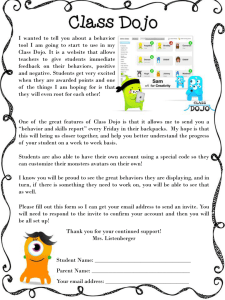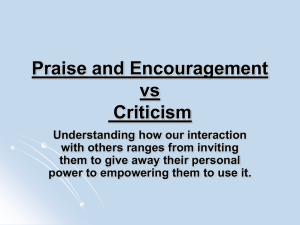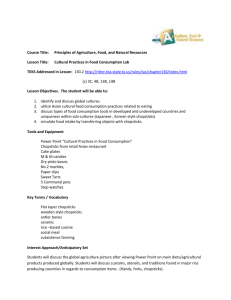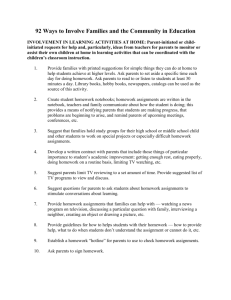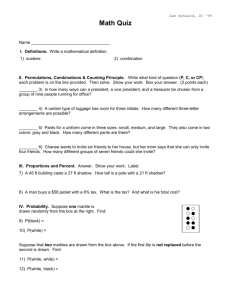Global Story Box Invitations
advertisement
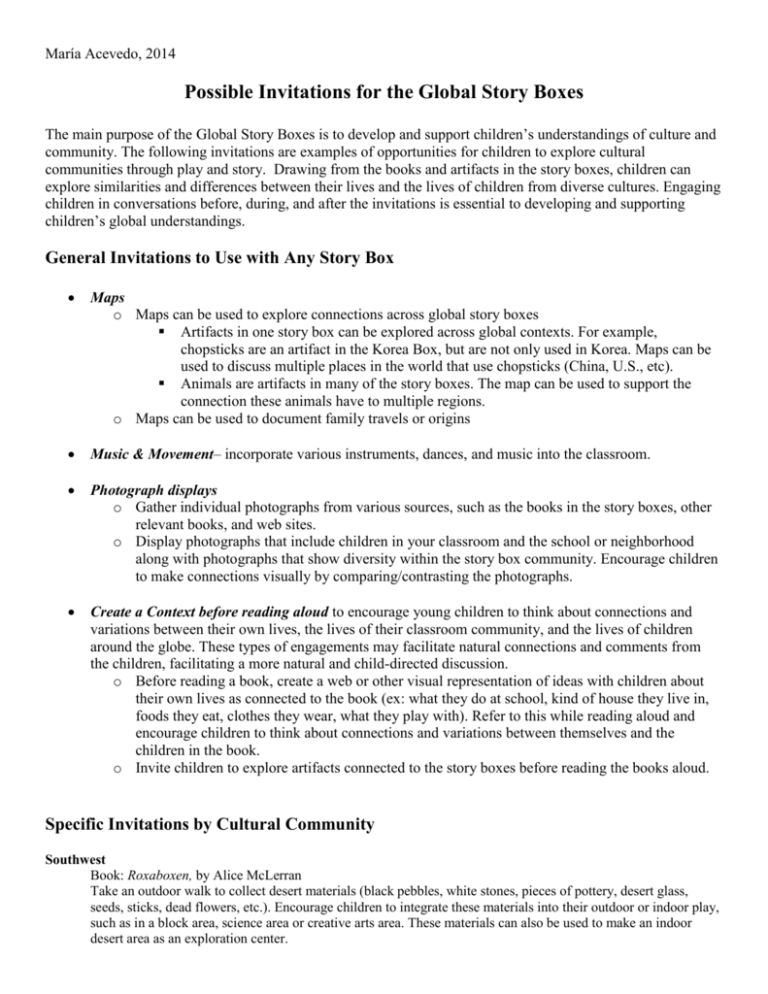
María Acevedo, 2014 Possible Invitations for the Global Story Boxes The main purpose of the Global Story Boxes is to develop and support children’s understandings of culture and community. The following invitations are examples of opportunities for children to explore cultural communities through play and story. Drawing from the books and artifacts in the story boxes, children can explore similarities and differences between their lives and the lives of children from diverse cultures. Engaging children in conversations before, during, and after the invitations is essential to developing and supporting children’s global understandings. General Invitations to Use with Any Story Box Maps o Maps can be used to explore connections across global story boxes Artifacts in one story box can be explored across global contexts. For example, chopsticks are an artifact in the Korea Box, but are not only used in Korea. Maps can be used to discuss multiple places in the world that use chopsticks (China, U.S., etc). Animals are artifacts in many of the story boxes. The map can be used to support the connection these animals have to multiple regions. o Maps can be used to document family travels or origins Music & Movement– incorporate various instruments, dances, and music into the classroom. Photograph displays o Gather individual photographs from various sources, such as the books in the story boxes, other relevant books, and web sites. o Display photographs that include children in your classroom and the school or neighborhood along with photographs that show diversity within the story box community. Encourage children to make connections visually by comparing/contrasting the photographs. Create a Context before reading aloud to encourage young children to think about connections and variations between their own lives, the lives of their classroom community, and the lives of children around the globe. These types of engagements may facilitate natural connections and comments from the children, facilitating a more natural and child-directed discussion. o Before reading a book, create a web or other visual representation of ideas with children about their own lives as connected to the book (ex: what they do at school, kind of house they live in, foods they eat, clothes they wear, what they play with). Refer to this while reading aloud and encourage children to think about connections and variations between themselves and the children in the book. o Invite children to explore artifacts connected to the story boxes before reading the books aloud. Specific Invitations by Cultural Community Southwest Book: Roxaboxen, by Alice McLerran Take an outdoor walk to collect desert materials (black pebbles, white stones, pieces of pottery, desert glass, seeds, sticks, dead flowers, etc.). Encourage children to integrate these materials into their outdoor or indoor play, such as in a block area, science area or creative arts area. These materials can also be used to make an indoor desert area as an exploration center. East Africa Books: For You Are a Kenyan Child and Omer’s Favorite Place Discuss the first two pages of the book which portrays the huts in the villages. Invite children to compare their own houses with those in the book and to draw or build their house. Book: Helen’s Shoes Take or find photographs of children’s shoes (standing, playing, sitting, dancing,) and shoe displays in local shoe stores and create a display along with pictures from the book. Give children an opportunity to engage with the pictures, make connections, recognize differences, and ask questions. Mexico Book: What Can You Do with a Rebozo?, by Carmen Tafolla Read the book and have children interact with the rebozo. Does anybody in your family have a rebozo? How else can we use a rebozo? Since the story emphasizes children playing with their parents’ clothing, they can share how they play with adult clothing at home. Collect clothing to encourage children to play with these materials as they share their stories. Place the clothing in the dramatic play center in the classroom for further exploration. Korea Book: Sori’s Harvest Full Moon and Bee-Bim Bop Create a big bus by lining up several chairs. Invite children to share stories about visiting relatives. How do they get to their relatives’ houses? What do they like doing with their relatives? The students can browse Bee Bim Bop to think about other ways in which children and family spend time together. Mexican-American Book: We Are Cousins/Somos primos Place playhouses, toy people, and different kinds of puppets in the dramatic play area. Invite the children to play and dictate some of their stories for later acting them out. Share several photos and/or magazine pictures of different families and relatives. You can include pictures from your own childhood or that of your own children/families. Note that Vivian Paley’s work provides ideas for acting out children’s stories. West Africa Book: Deron Goes to Nursery School Invite children to talk about their classroom daily routines. How are those similar to Deron’s nursery school? How are they different? Invite children to write/dictate/draw classroom stories to share with friends or families who are not part of their classroom but want to know about their school. Caribbean Books: Isla, J is for Jamaica, Kamal Goes to Trinidad, Caribbean Dream Invite children to explore the ways in which children and families enjoy living/visiting the Caribbean. Spending time at the beach is a common experience for people in the Caribbean. Invite children to share oral stories, drawings or drama about their experiences at the beach, river or pool and compare those with the ones in the books. American Indians of the Southwest Book: Baby Learns to Count Children can create their own counting books by drawing or photographing items that surround them in their everyday lives as does the Navajo child in the book. France Book: Everybody Bonjours! Invite children to create a list of the ways that they say “hello” and “thank you” in their families and of the different languages they use or know. Introduce the words “bonjour” and “Merci!” as you read this playful read aloud. Encourage the children to join you on the repetitive line: “Everybody bonjours”. India Book: Rangoli Invite children to talk about the ways they prepare for celebrations at home and practices regarding clothing, food, music and artifacts. Rangoli is a decoration for special events (http://www.activityvillage.co.uk/rangoli.htm). Invite children to identify a celebration that is important at school and work together to create one or several Rangolis for that event. You can use the sidewalk chalk along with other materials, such as colored rice, dry flour, and or even flower petals. Rangoli is a folk art that involves decorative designs on the floors of living rooms and courtyards during Hindu festivals. They are meant to be sacred welcoming areas for the Hindu deities. Rangoli designs can be simple geometric shapes, deity impressions, and flower and petal shapes or can become very elaborate designs crafted by numerous people. China Books: Maggie’s Chopsticks and Kindergarten Day China and USA Invite children to think about the utensils they use to eat at school/home and how they learned to use those. Show images of children and adults eating with chopsticks and allow time to explore using the chopsticks. Encourage them to make a list of the food they think they can eat with chopsticks. Make a variety of eating utensils available for children to explore, along with pictures of children around the world using those utensils (chopsticks, forks, spoons, tongs, long wooden utensils, etc.) Book: The Pet Dragon Add pictures of the characters in The Pet Dragon in the writing or art center. Invite students to practice drawing these characters and to explore creating their own characters.
